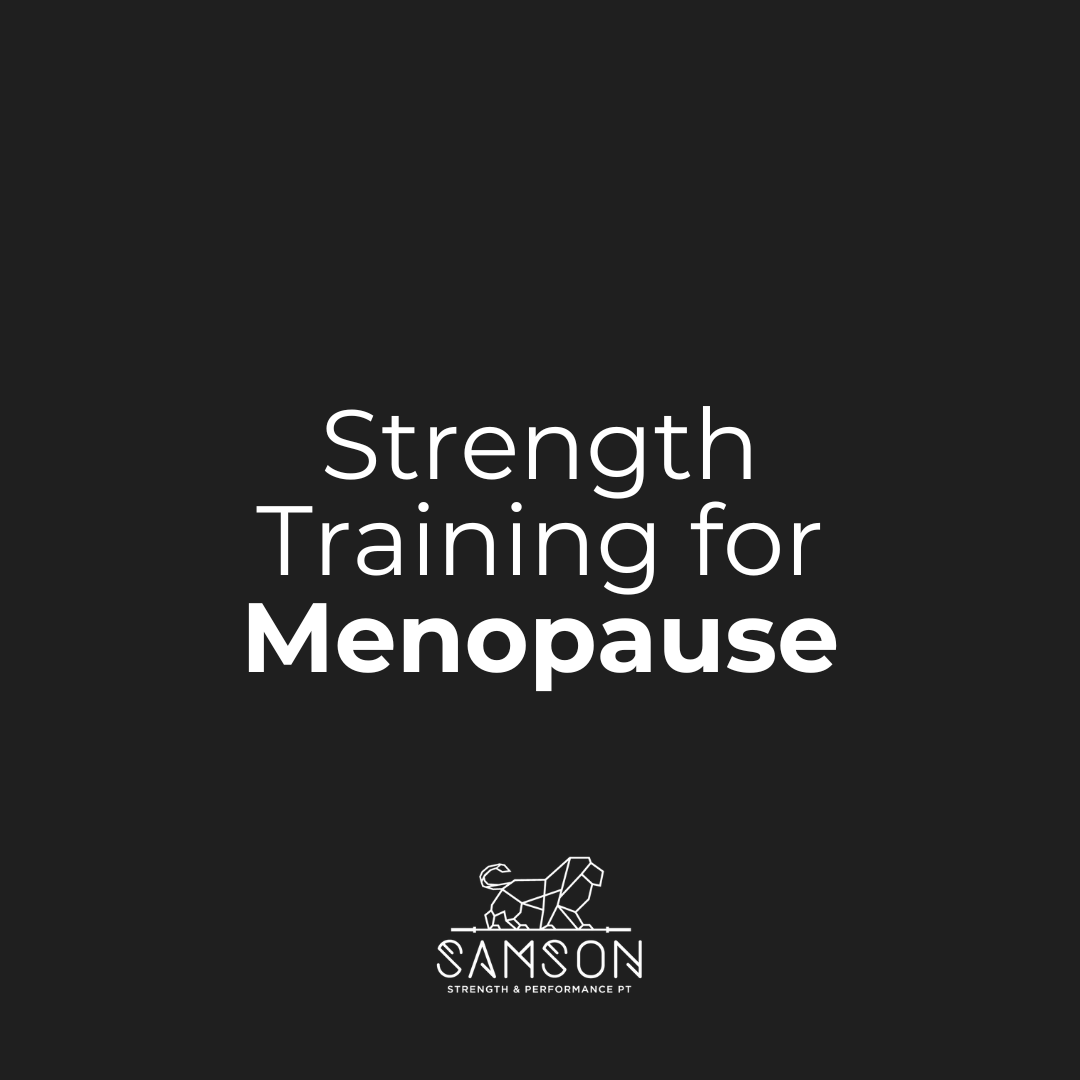Strength Training for Menopause
Why is strength training for menopause important?
Did you know that after our 30s, we lose 3-8% of our muscle mass EVERY decade?
If you aren’t doing something to maintain or gain muscle after your 30s, you are losing valuable muscle mass that will keep you resilient as you age.
So what can you do to maintain muscle mass?
Number one. Lift heavy weights.
Number two. Eat enough protein.
These two things are probably the most important things to be focused on to maintain and gain muscle mass.
Benefits of strength training for menopause
Recently, there has been a big shift in talking about menopause and battling the symptoms that come along with this transition. Strength training not only builds muscle, but increases bone density and lowers the risk of cardiovascular disease.
Strength training can slow the progression of sarcopenia (age-related muscle loss) in women by maintaining or even increasing muscle.
Strength training can also reduce the risk of fractures as women age, by increasing bone density.
Fall risk decreases with strength training as women get stronger and able to take more load through single leg exercises.
Adults who participate in strength training have a 15% lower all-cause mortality and 17% lower risk of cardiovascular disease compared with adults who do not train.
Unless you have been living under a rock, you know that strength training has many benefits for women in perimenopause and menopause, but how do you start strength training for menopause?
The key ingredients for strength training for menopause
Make sure you learn proper form from a trusted source. You should hire a professional that has knowledge of the body, experience working with older adults, and has well thought out programming.
Your programming should include squat, hinge, push, pull, carry and single leg components.
The lowest effective dose for strength training is 3x per week. If you can get more, great, but AT LEAST get 3x per week.
Reps should feel challenging at the end of your sets and you should not be performing all exercises with the same weight.
Eat enough protein to give your muscles the proper source to repair and build stronger. I suggest taking your bodyweight x 0.8 = your protein target in grams.
Track your protein and your workouts!
Feeling stuck and want help?
If you’re finding it hard to start, finding an in-person program can make a big difference. At Samson Strength and Performance PT, we specialize in helping women find their strength with semi-private personal training led by a doctor of physical therapy. Dr. Delilah also offers online remote coaching options and tons of free resources in her newsletter. You can sign up for her newsletter below.

